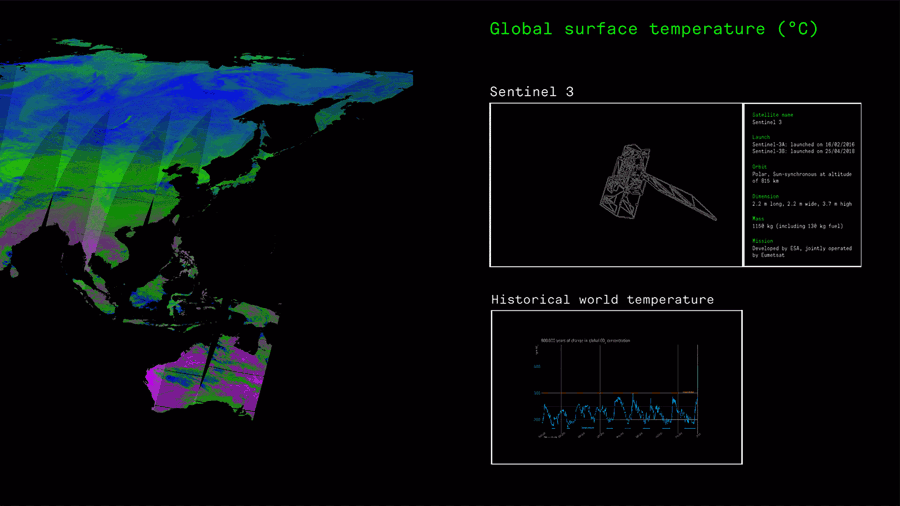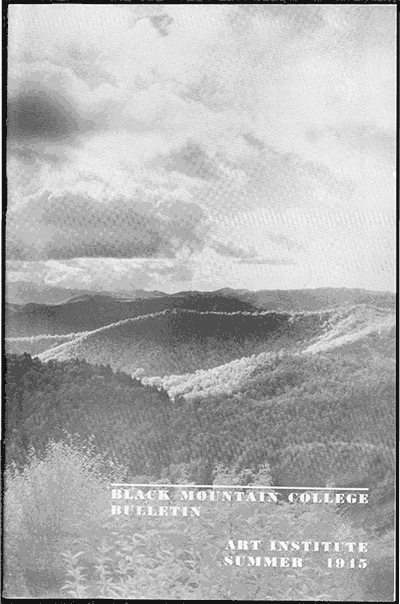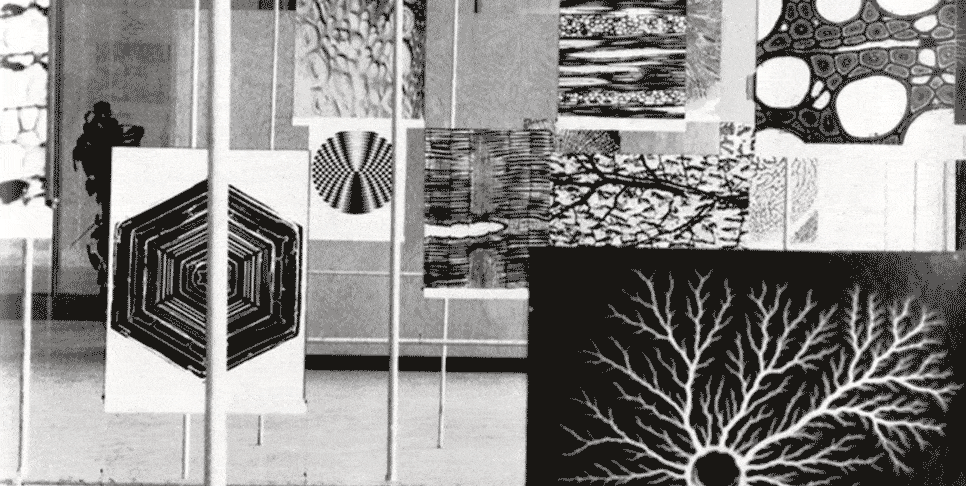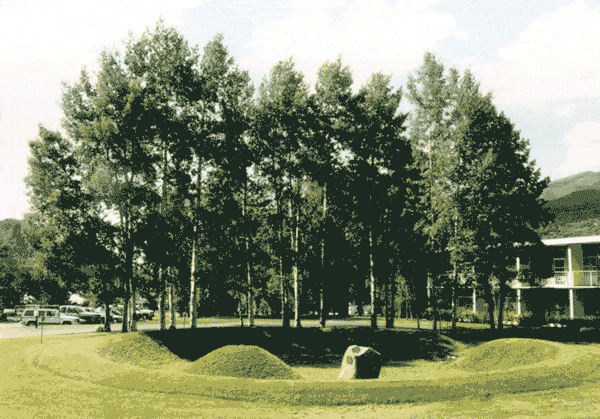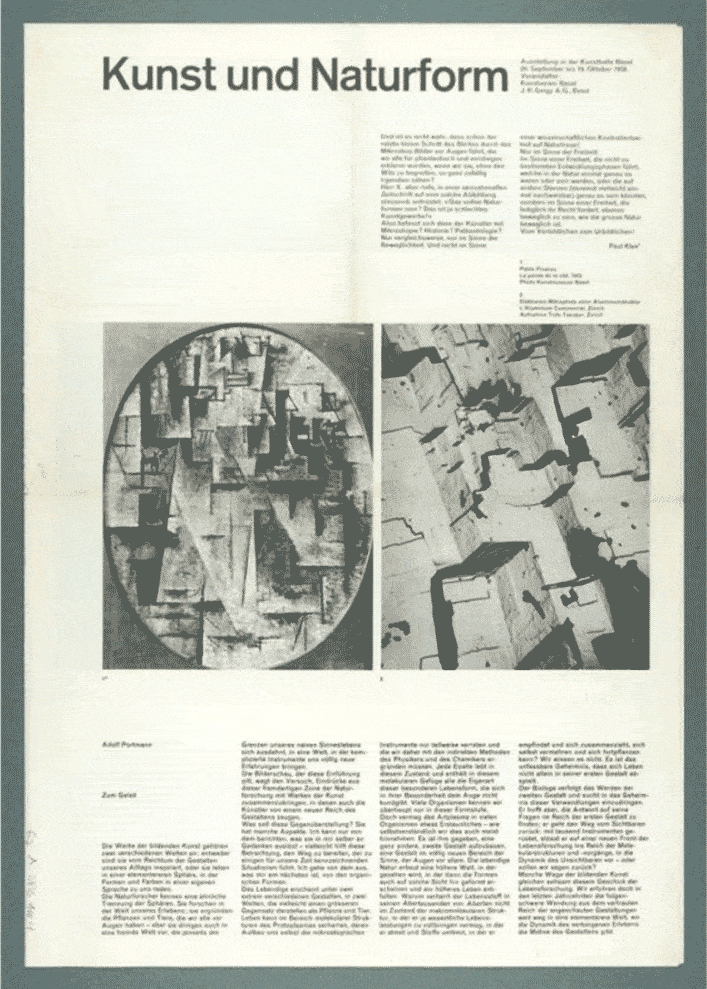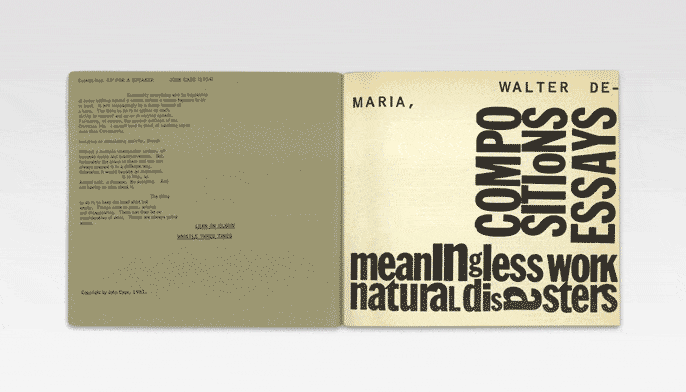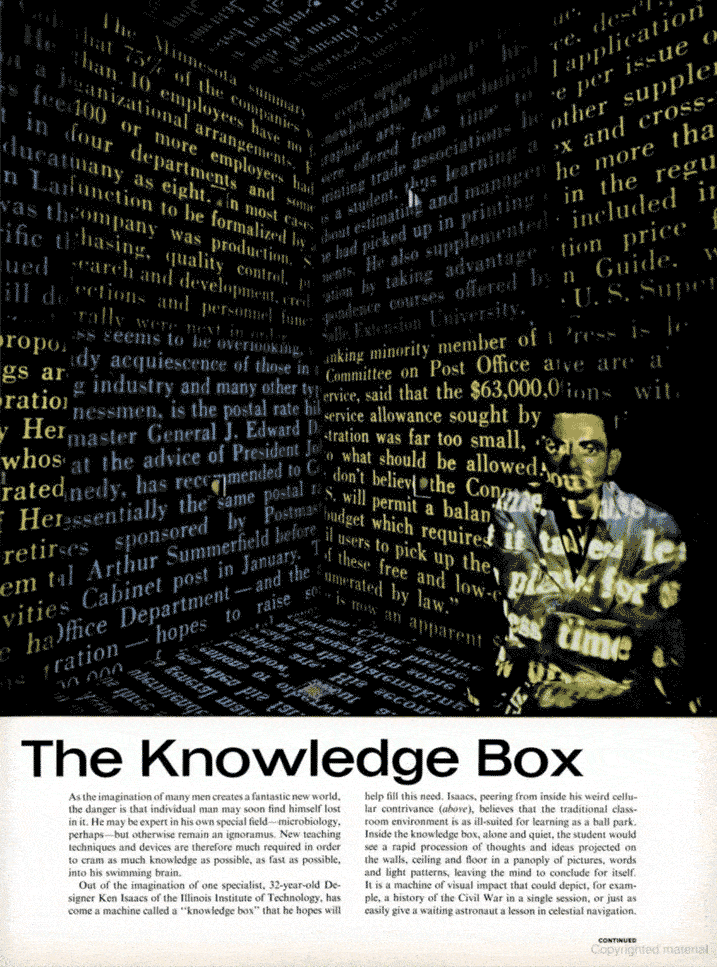
|
Hans Haacke’s “Kondensationwürfel” or “Condensation Cube” (1963–1965) exists in two versions, with approximately 30 and 76 cm side length. |
|
... make something, which experiences, reacts to its environment, changes, is nonstable...
... make something indeterminate, which always looks different, the shape of which cannot be predicted precisely...
... make something, which cannot "perform" without the assistance of its environment...
... make something, which reacts to light and temperature changes, is subject to air currents and depends, in its functioning, on the forces of gravity...
... make something, which the "spectator" handles, with which he plays and thus animates it...
... make something, which lives in time and make the "spectator" experience time...
... articulate something natural...
Hans Haacke, 1966.
Untitled statement, in Peter Selz, Directions in Kinetic Sculpture (Berkeley: University of California Press, 1966), 37; published in Peter Selz and Kristine Stiles (eds.), Theories and Documents of Contemporary Art: a Sourcebook of Artists’ Writings (Berkeley: University of California Press, 1996), 874.

Condensation Cube
Hans Haacke
Echoing the “Groundworks” timeline: 1963
“A ‘sculpture’ that physically reacts to its environment and/or affects its surroundings is no longer to be regarded as an object. The range of outside factors influencing it, as well as its own radius of action, reach beyond the space it materially occupies. It thus merges with the environment in a relationship that is better understood as a ‘system’ of interdependent processes. These processes – transfers of energy, matter or information – evolve without the viewer’s empathy. … Such independence does not permit him to assume his traditional role of being the master of the sculpture’s programme (meaning), rather the viewer now becomes a witness. A system is not imagined; it is real.”
Hans Haacke, 1969. Untitled statement, in Peter Selz and Kristine Stiles (eds.),
Theories and Documents of Contemporary Art: a Sourcebook of Artists’ Writings (Berkeley: University of California Press, 1996), 874.
“Hans Haacke’s Condensation Cube (1963–1965) is a hermetically sealed, clear acrylic plexiglass box, thirty centimeters on the side that holds about one centimeter or so of water. (→ 2) Condensation collects against the inner surface of the plexiglass forming vertical streaks on the inside. How the condensation is created can be explained in the following way: Air can hold only a limited amount of water vapor and when that limit or dew point – a law of nature, which applies to all bodies of air all over the world – is reached, condensation occurs. In almost all art museums, the temperature is set at a cool 65 degrees Fahrenheit, which means that at a relative humidity of about 45 percent (the standard in most museums), the dew point is at 42 degrees. Because plexiglass is a bad thermal insulator, the air temperature inside the Cube is the same as the temperature on the outside, namely 65 degrees. But since the humidity is close to 100 percent, the dew point is much higher, and is, in fact, about 65 degrees, precisely the temperature of the plexiglass.
I will argue that the Cube sets in play a rather complex game of illusions between the museum and the architecture that defines its space. This revolves not only around the word ‘cube,’ but also around the status of condensation as a cultural construct.
The story begins in the mid-nineteenth century when, with the advent of mechanized, ducted heating systems in multi-floor apartment buildings, it was discovered that condensation appeared neither on the outside nor on the inside surfaces of the building, but within the wall itself. There it would lurk, creating mold and rot. Condensation endangered the life span of these new buildings and thus, of course, the capital investment that they represented.
…
The Condensation Cube, first made in 1963, was produced at the very time when museum curating and moisture engineering were becoming synonymous. The piece sets the natural cycles of water and condensation in relation to the invisible and tightly sealed plastic sheathing hidden from view in the museum's walls. The Cube is, however, more than an ironic counterstatement to the museological environment, for one has to remember, that it is not just the mechanization of atmosphere that is important in museums, but the need to preserve temperature and humidity at a constant level. In other words, it is the museum's constantly monitored machines – a humidifier and a de-humidifier working together with a thermohygrometer (also known as hygrothermograph) – that produce the constant rain of droplets in Haacke's Cube. The condensation in the Cube is thus a type of perpetuum mobile induced into motion by remote control. One artifice is posited against another, a Box against a Cube, a man- made constant against a natural law – the white noise of the machines against the quiet of the water.
The Cube also creates a feed-back loop with the machines that set its condensation in motion, for if the machines were to malfunction, condensation would not appear. The Condensation Cube would become just a cube and no longer a ‘work of art.’ Stated differently, by observing the Condensation Cube one is registering the efficiency of the machines, with the Cube a type of monitor in its own right. The irony is that, as the quote above indicates, visitors to the museum endanger that relationship. Humans bring heat and humidity into the room, which is why the more precious the objects, the greater the restrictions on how many people are allowed into the museum space. A museum visitor is a potential danger to the law of environmental constancy. If too many people were to stand close to the Cube, the micro-climate around it would change the Condensation Cube into a mere plexiglass box, setting off environmental as well as curatorial alarms. …”
- (2) There is, however, a small hole at the bottom covered with clear tape,
that allows the water to be drained when not on display.”
Mark Jarzombek — “Haacke’s Condensation Cube: The Machine in the Box and the Travails of Architecture”, Thresholds 30 (“Microcosms”, Fall 2005), 98-105. Accessed here on March 2021.
|
In the early 1960s, already living in New York, the German artist Hans Haacke began conceiving works that “involved the production of “self-contained systems”. In the artist’s own words, in these Plexiglas or Perspex containers, “The conditions are comparable to a living organism which reacts in a flexible manner to its surroundings. The image of condensation cannot be precisely predicted. It is changing freely, bound only by statistical limits. I like this freedom.” (1965). Later in the same decade, Haacke’s works became “more politicized and his attention turned from natural to social systems” (Harrison and Wood, 1992). |
“maat Explorations” is an ongoing programme that delves into the socio-cultural and environmental transformations stemming from the current bio crisis and ecological destruction. It provides an insight into the hard science of climate intervention and the creative speculations behind innovation-led research to safeguard our planetary co-existence. Prominent in this strand is the installation Earth Bits – Sensing the Planetary, that opens access to the complex interconnectedness between the environmental and the energetic quests and its reverberation through decades of artistic production, political and cultural movements traced from the 1960s until today. On maat ext., a series of #groundworks hashtags introduce the critical explorations that feed into the complex interconnectivity between the environmental and energetic quests, and its reverberation through decades of artistic production, political and cultural movements traced from the 1960s until today. |


